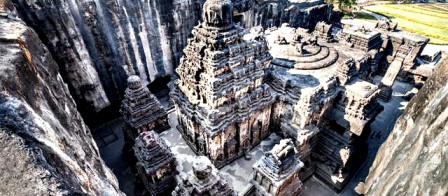Post Mauryan India – History Study Notes & Stuff
After Maurya, India was not a very notable period for political solidarity, but it saw the development of Indian culture to a great extent. There were invasions of various foreign tribes, but Indian society absorbed these intruders and continued their development by making changes and additions to themselves. This time showed the strength of Indian culture and society to face the invasions.
After Ashoka's successors failed to keep the empire intact, various small kingdoms emerged in front of the Indian subcontinent. The Maurya dynasty was replaced by the Sung dynasty.
The Sunga Dynasty:
The founder of the Sunga dynasty was Pushyamitra Sunga (187–151 BCE). He killed the last Mauryan ruler, Brihadratha, to capture the throne. By this time most of the Mauryan Empire had been shattered.
- The southern parts were under the Satavahanas.
- The northwestern region were facing attack from Bactrian Greek.
- Pushyamitra Sunga struggled to keep the region under his control.
- He kept the Greek invasions in check, which was considered his major achievement.
- Pushyamitra was a proponent of the Brahmanical tradition. He started again the practice of 'Ashwamedha Yajna'.
- He also contributed to the construction of the Buddhist Stupa at Bharhut.
Pushyamitra's son became the ruler after his death. He conquered the Vidarbha region.
Devabhuti was the 9th last ruler of the Sung dynasty. He was assassinated by his minister Vasudeva Kanva.
Importance of Sunga Rule:
Sunga defended the Gangetic valley from foreign invasions and started again the Brahmanical tradition (Ashvamedha). He also promoted other religions and Sanskrit language.
Kanva Dynasty:
It was founded by Vasudeva Kanva. It is believed that he was a descendant of Rishi Kanva and a Brahmin from caste. At the time of Vasudeva Kanva, the boundary of the kingdom was greatly reduced. Not much is known about the rulers of this dynasty. The last king of Kanvas was Sushraman.The Satavahana Dynasty:
After the fall of the Mauryan Empire in the Deccan, the Satavahanas became politically prominent in the mid-1st century BC. They were the most important original successor of the Mauryas.(1st century A.D.) The greatest ruler of the Satavahana rulers was Gotamiputra Satakarni. He extended the Satavahana rule by defeating the Shaka ruler Nahapana of Western India and the kingdom of Gautamiputra Satakarni extended from the Krishna River in the south to the Godavari River in the north. The Satavahana was located at the Rajdhani Pratishthan (modern day Paithan near Aurangabad, Maharashtra).
The Chedis/Chetas of Kalinga:
In the middle of the first century BC , Kalinga came to power under King Kharavel. He was a Jaina mentioned in his inscriptions. He won various conquests which are recorded on an inscription as his achievements.The Hathigumpha inscription is located in the Udayagiri hills near Bhubaneswar in Odisha.
Apart from the Hathigumpha inscription, not much is known about this dynasty.
The Bactrian Indo-Greeks:
After Alexander's death in 323 BC, various Greeks settled north of present-day Afghanistan on the northwestern boarder of India. The rulers of Bactria are called Bactrian-Greeks, as they were Hellenistic (Greek) in their lineage.In the time of Pushyamitra Sunga, the invaders were ruled by Demetrius. But the most Indo-Greek ruler was King Menander. His empire included southern Afghani and Gandhar regions (west of the Indus). He is referred to as King Milinda who mentions in the famous Buddhist treatise Milindapanho in which the philosophical questions asked by Milinda to Nagasena are described in detail. The capital of his kingdom was Sakala (Sialkot). He later embraced Buddhism. In addition, Heliodorus, a Greek ambassador, adopted Vaishnavism and built the Garuda pillar at Besnagar. Greek influence in India lasted for more than a century after the death of King Menander.
The Sakas Dynasty:
The Sakas, also known as the Scythians. He captured Bactria from the Greek rulers and followed in the footsteps of the Greeks to extend their rule over the northwestern parts of India. The Sakas had two distinct groups - the northern satraps who ruled over Taxila; And the Western satraps who ruled Maharashtra. Maues was the founder of the Saka rule in India in the first century BC and his successor Azes I is considered the founder of the 'Vikram era'.Rudradaman I was the most famous among the first Shaka rulers who ruled in the middle of the 2nd century AD. He is also known for carrying out the repair work of the Sudarshan lake, which was originally built during the reign of Chandragupta Maurya. It is mentioned on an inscription, which engraved in Girnar / Junagadh, Gujarat. This inscription is the first royal inscription of India which is composed in sacred Sanskrit. The Saka rulers of Taxila were defeated by the Parthians.
The Parthians:
Parthians were originally Iranian. He had a deep cultural connection with the Shakas and for this reason these two groups are called ‘Shaka-pahalva'. The inscription that indicates Parthian rule in the northwestern region of Pakistan is the inscription of Takht-e-Bahu at Mardan near Peshawar. This 45 AD is dated to, refers to the Gondophernes /Gondophares as Parthian rulers and is believed to have adopted Christianity in association with St. Thomas.The Kushanas:
The Parthians were followed by the Kushanas. They also known as the Yuechis or Tocharian. They were one of the five dynasties of the Yuechi tribe and two successive dynasties among the Kushanas.
The Kadphises established the first dynasty, which ruled for 28 years. Which had two kings, Kadphises I and II or Vima Kadphises. Kanishka was the greatest Kushana king. He also spread his kingdom beyond the Western Himalayas. He spread Buddhism to Tibet, China and Central Asia.
If you want us to add any more details to this article, please do let us know in the comments below.








0 Comments